It's Time for Civilization Collapse Awareness - Pt. I
The continued pursuit of business as usual has made +3 °C global warming unescapable
The world is busy with the hype of the supposed existential risks for humanity coming from AI, AGI, or whatever kind of Terminator-like scenarios, that supposedly could result in human extinction or an irreversible global catastrophe. Frankly, I believe we're only indulging in nothing more than a fantasy, diverting our attention from the real existential risks that are propelling us straight into catastrophe. I’m much more concerned about climate change, wars, financial crises, or the rise of authoritarianism and the potential collapse of our present civilization model.
In the following series of essays, I will describe the reasons why the continued pursuit of business as usual over the last three decades has put us, according to UN projections, onto a trajectory of at least +2°C global warming by 2050 and + 3 °C by 2100. But there are good reasons to believe this to be much too optimistic. If we continue with this state of denial, breaking the +2°C global warming mark in the next ten years, and + 3 °C before 2050, is a more realistic prediction. I believe this is an already sealed fate, not because of the physical impossibility of meeting the challenges of climate change but because there is no sign in the collective consciousness of a will to do so. Until recently, I believed there would soon be a change in consciousness on these matters, but I now see this won’t happen anytime soon.
Those familiar with me know that I’m not prone to apocalyptic doomsday prophecies. I never gave much credit to crash prophets, preppers, climate doomers, or any sort of dystopian futurism. However, I have gone through enough information, seen enough data, read enough scientific papers, and, especially, looked deep enough into human nature to safely say that, unless we find a sci-fi technology that fixes the climate (e.g., geoengineering the atmosphere) and for some miracle (sometimes miracles happen) especially the rich nations will be willing to relinquish from their business as usual, this civilization, today’s civil society with the economic, environmental, and political order we know in its present form, won’t make it. Humanity is not ready and is heading for a global societal collapse that might throw it back toward the living standards of the beginning of the 20th century.
On the other hand, we are also on the verge of an evolutionary transformation that could make us become a more conscious and enlightened spiritual being. Previously, I was among the optimists who believed that a great collective awakening was on its way. We had a great chance to build a new and better world, and I had no doubt that, despite all the setbacks, we would not miss this opportunity. The opportunity to make a great leap toward a spiritually awakened age of peace, harmony, and wellbeing, in which spirit and matter, science and spirituality, humans and Nature are the complementary polarities of the one and the same, was (and still is) an absolutely evident prospect. I see the awakening in a minority but also the resistance and refusal of the majority. I once believed that it was only a matter of time before the latter would join the former. I still believe that, but I finally came to understand that this won’t happen in my lifetime nor the lifetimes of the new and next generations. I’m thinking of my two nieces who are two and three years old. In 2100 they will be almost 80 years old and will almost certainly have gone through unimaginable ‘natural’ catastrophes. We had a window of opportunity to walk a sunlit path, but humanity opted for the prolonged and painful path.
At this point, the dreams of a sustainable, free, and fair society built upon renewable resources in harmony with Nature will remain wishful thinking for generations to come. The noble ideals of the young people rising up against climate change and for a clean and fair society will be crushed. They will not see, in their lifetime, a transition to a better world based on climate justice. Most likely, the newborn won’t either. There is light at the end of the tunnel, but that tunnel will be a long period of turmoil and material misery. The day will come when humanity will live in balance with Nature and all nations will form a harmonious unity in diversity, something the Indian mystic Sri Aurobindo called the ‘subjective age.’ However, everything shows that we will have to go through a dark age period first. It is not going to be another little crisis, such as a pandemic or financial crash that lasts only a few years. Rather, it will be an irreversible global catastrophe requiring a century or more to recover from. It will be a long-lasting period of severe deprivations, socio-political chaos, and, I’m afraid, authoritarian involution. I’m not saying that this scenario was inevitable, but I now see clearly that there was and still remains no desire to avoid it, and it might become a reality much sooner than expected. Perhaps in only a few decades.
Especially for those who stubbornly cling to their consumerist and materialistic lifestyles, mindsets, and other past or present mass delusions, this century will be very depressing. Even highly educated academics persist in a state of denial: Most scientists and economists continue to downplay the impact of uncontrolled population growth and see nothing wrong in the self-destructive myth of perpetual economic growth. How can we expect ordinary people, busy with their everyday business, to realize what professionals refuse to accept? It is now clear that we will keep consuming, polluting, and exploiting, no matter what.
After this depressing introduction, you might not believe it, but my intention is not to induce pessimism or make people fall into depression. On the contrary, my aim is to face reality, accept it, and see how one can (re-)start from there. It is a different way of looking at the future—not an idea of how to amend and improve the status quo but, rather, an idea of how to work in the present for a future world that tries to rise from the ashes of a society that sought to preserve itself in an unsustainable mode at any cost.
Global Ecological Overshoot
Let me elucidate the technical details that forcibly lead to this conclusion.
You might think that my pessimism is guided by the usual gloomy predictions on climate change, global warming, or environmental degradation. However, the ecological imbalance is only one aspect of a much vaster and more complex issue. Even if we could miraculously switch to a zero-greenhouse gas emission society, that wouldn’t save us from collapse. This would be yet another attempt of the human species to replace one power supply with another that is supposed to enable us to continue with business as usual. It is now amply clear that we will not be allowed to take this much-too-easy shortcut.
Contrary to popular belief, our real challenge can’t simplistically be reduced to a decrease in carbon emissions. The real issue that is seldom acknowledged by the masses (and, to a large degree, ignored by scientists and economists, let alone policymakers) is known as ‘global ecological overshoot,’ of which climate change is the effect, not the cause.
The term ‘overshoot’ is used in the context of ecological sustainability and refers to a situation in which humanity's demand for the planet's resources exceeds Earth’s capacity to regenerate those resources. When the global ecological footprint of a civilization surpasses the Earth's carrying capacity (such as the ability of the planet to regenerate renewable resources and absorb waste), the result is a state of overshoot. For a technical introduction, see this article by Prof. William Rees of British Columbia University or listen to this illuminating podcast.
Human activity impacts natural resources, for example, with soil degradation of arable land through erosion, salinization, and the depletion of nutrients, water consumption and the over-extraction of groundwater, loss of biodiversity due to habitat destruction such as large-scale industrial deforestation, intensive land use (especially due to livestock agriculture), air pollution, the accumulation of waste, etc. The Earth can partially absorb this impact and regenerate these resources, but this capacity isn’t infinite. Humanity has gone way beyond this red line—that is, already about half a century ago, it ‘overshot’ the global natural ability of Earth’s regeneration capacity. That’s why every year ‘Earth Overshoot Day’ is celebrated. It marks the date when humanity’s demand for ecological resources in a given year exceeds what Earth can regenerate in that year. As of the time of this writing, it is on August 2. This means that in 2023, for about five months, humanity consumes more than what the Earth can furnish.
You might then wonder: Where do all the energy and materials we overconsume for five months a year come from? The answer is simple: We keep liquidating stocks of ecological resources (e.g., forests, topsoil, etc.) that Nature created over millions of years. Thus, we further degrade the global Earth’s regeneration capacity, which, ultimately, is the biophysical basis of our existence. It is like regularly tapping into the savings you built up with your hard work for decades while the balance of your bank account steadily decreases. On the other hand, we can artificially extend Earth’s carrying capacity by digging (and fracking) deeper and deeper under its surface to extract fossil fuels and exploit aquifers, minerals, and metals. Moreover, some can overshoot locally only because they loot other habitats globally. The rich consume much more than they need, while the poor end up in misery and under- or malnutrition. Especially rich nations pride themselves on living way beyond their carrying capacity. (For example, the US and Canada consume five times as much as their natural resources would allow for. For each country’s overshoot day, see here.) They can do so only because they take advantage of—that is, destroy—natural resources elsewhere and resort to cheap labor kept in poverty, often bordering on modern slavery. Without these exploitative and dehumanizing practices, our civilization would never have been able to grow this large or would have collapsed in the last three or four decades. Thus, the Earth is not supporting 8.1 billion people in a sustainable manner.
It takes some time to think beyond the box of the conventional sustainability rationale. Usually, we think of the environmental impact of human activity in separate terms of global warming and climate change, poverty, the economy, world hunger, deforestation, etc. Rarely do we connect the dots into a big picture revealing the interdependency of all these things. Most eminently, we seldom see a correlation with an increasing world population and the dogma of GDP growth as the measure of economic wealth. For example, how often have you heard climatologists ardently talking about anthropogenic greenhouse gas emissions and connecting them to the size of the world population? In general, when do we hear environmentalists blaming the consumerist culture and questioning whether the environment can sustain the number of consumers? And how often do we hear economists seriously considering scenarios of a degrowth economy? Rarely. It remains taboo. And when they do, they don’t bring up the demographic issue.
First of all, it takes time and an intellectual effort to connect the dots and see things from a wider overshoot perspective. And once one has done so, one realizes that the idea of a global collapse is a very concrete possibility. However, scientists prefer to downplay the problem, avoiding references to such catastrophic scenarios because they believe it is better to keep everyone from flipping out in a panic (and let us slowly cook), and also because it might give them a reputation as ‘alarmists.’ In many cases, they prefer to retreat to a denial state themselves.
To illustrate what this is all about, let us proceed in steps. Please, carefully review the following graphs. Take your time so that you understand and get a feeling of what they mean.

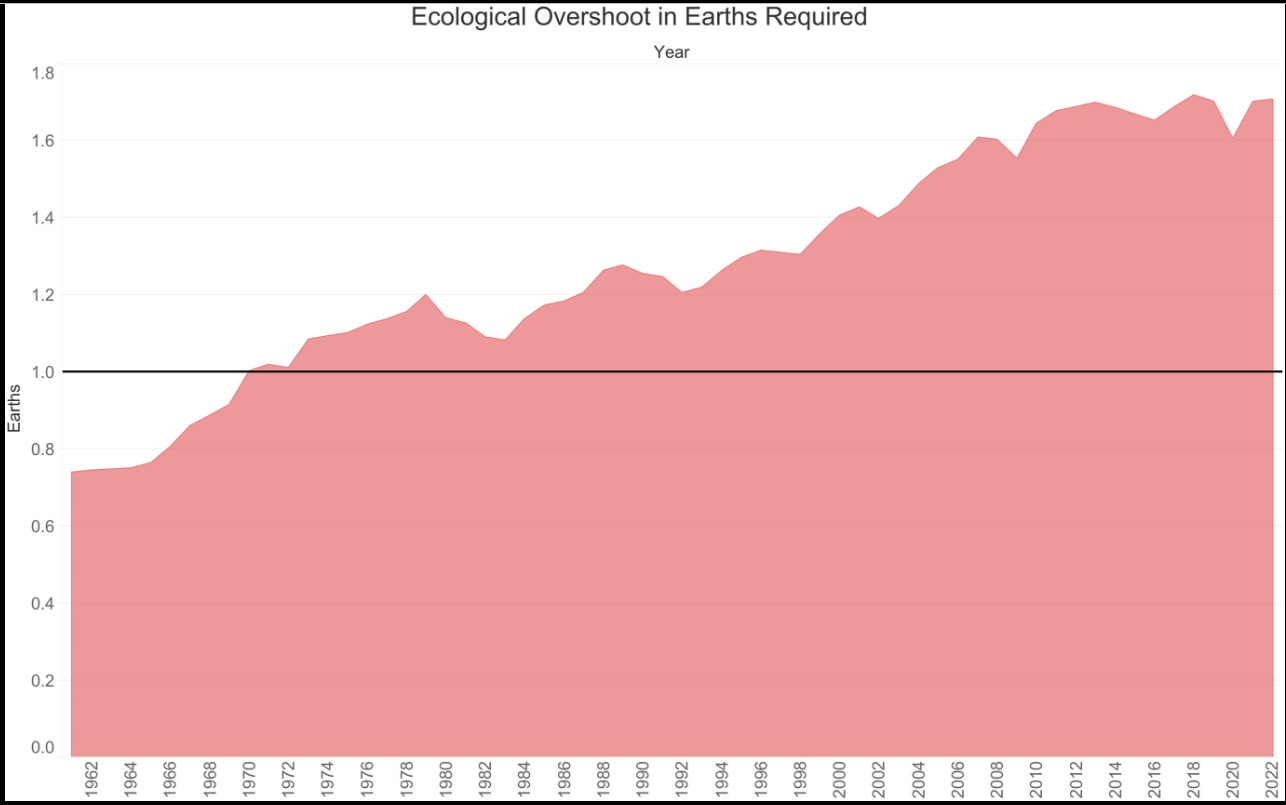
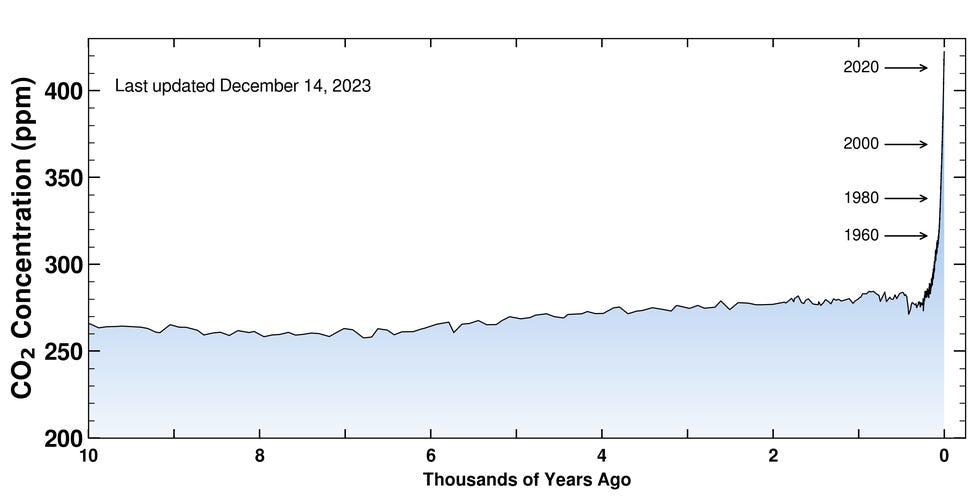

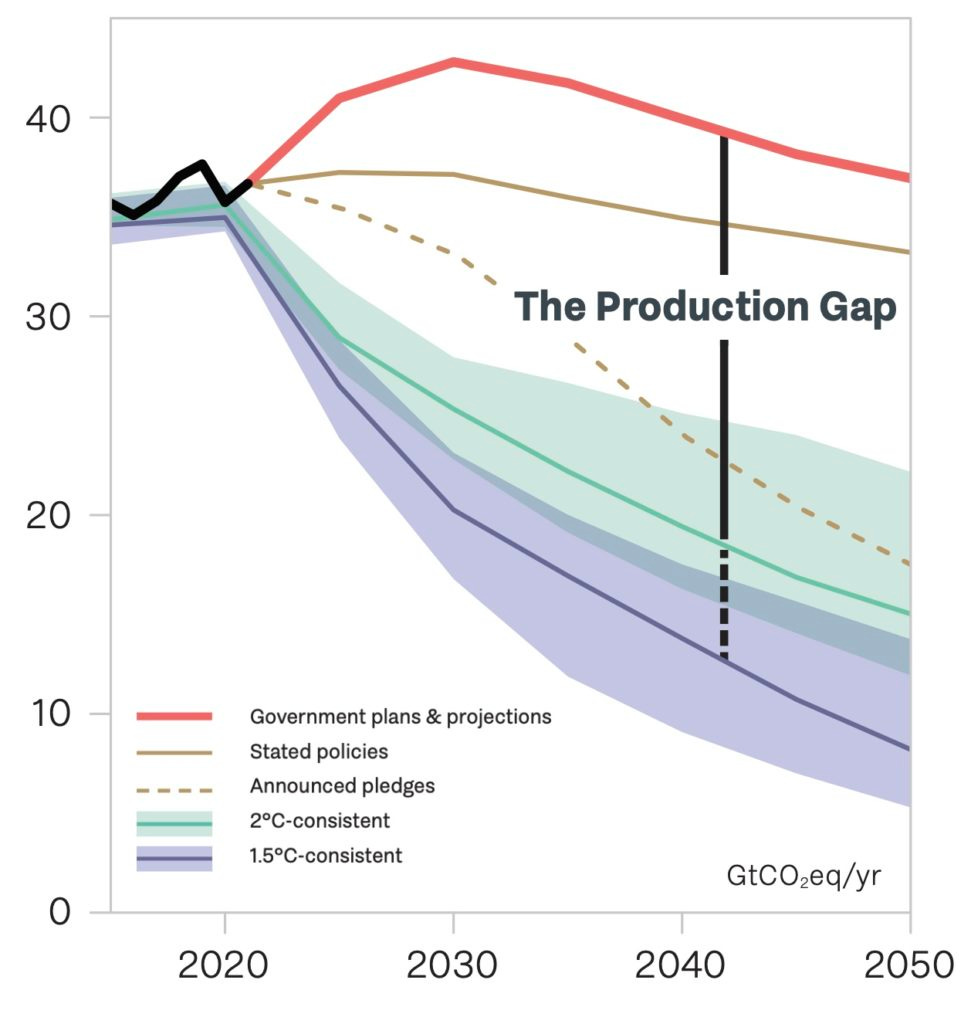
Now, my questions are the following: Should we believe that all this will end smoothly? Do Fig. 2 and Fig. 4 suggest a ‘safe landing’ with a happy ending? Is the still exponentially growing energy consumption shown in Fig. 5 good for wealthy material development? Fig. 6 shows the mantra of all economies: growth, growth, growth. Is the non-exponential growth in Fig. 7 reassuring? Meanwhile, will the peaks and record values of Fig. 8 and Fig. 9 follow a different trend soon? Is the anomaly in Fig. 10 an ‘escapade’ of the year 2023? Does Fig. 11 still leave some hope that we can limit global warming to +1.5 °C above the preindustrial values as set by the Paris Agreement? Are these only snapshots in time that might look frightening, but, for whatever reason, all will be right in the end?
If you do not have a clear idea of what this means (or could mean), please imagine the following. Suppose you are landing on another planet and are observing a species undergoing these growth dynamics, subjecting their home planet to this exploitation of resources and this kind of environmental impact. Would you expect it to soon smoothly transition to a sustainable society and habitat, avoiding some form of disaster or collapse? Would you see any evidence that such a civilization has noticed anything and is acting consciously? Honestly?
I know the typical counterarguments against apocalyptic forecasts. Let me take up a few of them.1
A typical narrative is that which would like us to believe that overpopulation isn’t a real issue. (For example, read this article.)
We are told that the ‘Malthusian pessimism’ regularly surfaces, particularly in the era of climate change, but it has been proven wrong. Robert Malthus, a British economist, predicted in 1798 that human beings would reproduce exponentially to the point of starvation. “The power of population is so superior to the power of the Earth to produce subsistence for man, that premature death must in some shape or other visit the human race,” Malthus foresaw. What made Malthus so unpopular was his proposal to eliminate all poverty aid, forcing the poor to either stop having children or starve to death. Of course, according to our modern human rights standards, this inhumane treatment would not be considered a viable option for population control. But does this imply that Malthus’ concerns were wrong?
About 225 years later can we honestly say that all the “premature deaths that visited the human race in some shape or other” had nothing to do with the size of the human race? We are now 8.1 billion (adding 80 million every year), and this is supposed to have no impact on the environment, the economy, society, politics, wars, pandemics, and the variety of catastrophes we witnessed in the last two centuries? Should we believe that the graphs illustrating the unstoppable increase in CO2 emissions and world temperatures have no relation to the graph of the world population increase and land use, with all its environmental impact?
In a sense, there are positive downsides. A process of mass industrialization allowed billions to reach material welfare. Financial, scientific, and technological progress that allowed poor nations to develop and increase their GDP would not have been possible without the massive burning of fossil fuels on a planetary scale. The increased mechanization of agriculture avoided mass starvation. And yet, about 10% of the world's population still faces hunger (with a new increasing trend since 2017). And, because the GDP is proportional to oil consumption, it is inevitable that the greater in number we are, the more we eat, consume, produce, and, thereby, pollute. This isn’t rocket science. It’s simple logic and common sense.
Let us consider a few other examples highlighting the detrimental effects of a constant growth mentality.
We often assume perpetual agricultural land usage, overlooking the significance of topsoil. Topsoil, a living entity, harbors a microcosm of life, including vital microorganisms essential for robust plant growth. However, due to continual harvests, these are dwindling, causing a steep decline in soil quality.
Fertilizers and chemical pesticides, herbicides, and fungicides aggravate topsoil degradation by altering soil pH and annihilating beneficial microorganisms, thereby rendering plants less nutritious and exacerbating soil erosion. Despite these perils, agricultural reliance on these detrimental practices persists due to immediate harvest yields. This perpetuates topsoil demise.
However, the impending repercussions, including food scarcity and compromised nutrition, will profoundly impact current and future generations. Conservation methods could temporarily mitigate topsoil erosion, yet the sheer population magnitude poses an inescapable problem: We’re exhausting our topsoil reserves and, thus, imperiling global food security.
Topsoil depletion renders once-fertile land barren, underscoring its status as a key global issue. Industrial agriculture has ravaged 70% of the world's topsoil. A grim prediction by the U.N. suggests we have only 50 years left before topsoil depletion becomes catastrophic.
However, even sooner than that, we might have to confront water scarcity. Severe droughts exacerbated by climate change afflict regions globally, crippling significant rivers and groundwater sources. Water scarcity doesn't imply imminent thirst but predicts acute food shortages, considering that 75% of groundwater aids agriculture. This trajectory portends chaos if food production falters due to aquifer exhaustion and persistent droughts.
Why is the ordinary world citizen not feeling these crises coming? Because it is like running out of fuel. Your engine will run flawlessly until the last drop of gasoline. Humans’ myopia regarding the long-term consequences of their actions isn’t much more evolved than that of any other animal.
And what about migration? Everybody is talking about migration policies that don’t work, about ‘stopping the boats,’ or calling for building border walls, while xenophobia is on the rise. That one of migration’s driving forces has become climate change is rarely a matter of debate. Climate change is caused by excessive greenhouse gas emissions. Excessive greenhouse gas emissions are caused by the rise in human activities, especially the burning of fossil fuels such as coal, oil, and natural gas, as well as deforestation, industrial processes, and agricultural practices to feed and serve people. If the number of people is too large, their ecological footprint overshoots the local habitat’s carrying capacity. This causes a scarcity of resources and forces the population to move elsewhere. The connection between migration, climate change, and overpopulation should be self-evident, and yet we struggle to connect the dots.
Can we predict where all this will lead us?
I don’t rely on the paranormal abilities of precognition. Instead, I believe in science. We know from biology that an overexploited environment with a too-high population pressure naturally ignites a 'boom-bust' cycle. This is seen in any species introduced to a new habitat abundant in resources and lacking predators. The population expands unchallenged until it depletes all resources and pollutes its habitat. This leads to overcrowding, resource scarcity, competition, and conflict. Then, due to disease and starvation, the population crashes to a level at or below the theoretical carrying capacity of the environment, and the cycle repeats through boom-and-bust phases. Humans are still in a boom phase, but the signs of a coming bust phase are all there. Nevertheless, the notion of an unlimited expansion in a finite world remains one of the most stubborn myths. With the planet's carrying capacity already surpassed, it is only a matter of time before resources will begin to dwindle and strain food production, heralding population decline with potential dramatic scenarios of malnutrition and starvation.
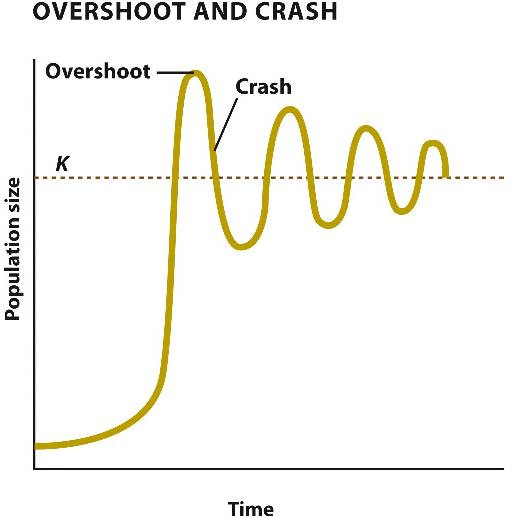
It is important to keep in mind that the overshoot and crash cycles are not just some abstract theory. Rather, they are a law of Nature that can be observed among all species and in all environments.
Again, the only reason we can still escape this fate is because humans are exploiting and destroying nature on an unprecedented scale, drilling deeper and deeper under the ground or on the ocean floor, and because of widespread violations of human rights. Can this go on forever?
This is the point where I hear so often that it is all about capitalism and neo-liberalism. If wealth and resources were fairly distributed, overpopulation would not be an issue. However, while a transition to a new economic model that reduces the ever-increasing divide between rich and poor and that redirects the world’s capital flow according to a more equitable formula will certainly be part of the solution, it is naive to believe that this alone can fix the problems related to an overcrowded world. Even if we can shift toward a post-capitalistic economy, wealth redistribution will only lead to the redistribution of energy consumption, greenhouse gas emissions, and the exploitation of natural resources without changing their overall sum. Even if we lived in an ideal world where everyone possessed equal wealth and had equal access to resources, the world would still be in overshoot. The exception is if it were supplemented with a drastic reduction in the world population and a pro-capita ecological and environmental footprint impact for each of us. If an economic model does not address the link between population size, unlimited growth, and the red line drawn by the environment’s global overshoot, it is doomed to repeat the same mistakes.
Whatever your position on these matters might be, I hope you see that the issue goes way beyond the simplistic ideal of installing solar panels and wind turbines everywhere. Don’t get me wrong—I’m 100% for solar, wind, and renewable energies. We need to transition as fast as possible to a carbon-neutral society. But let us face reality.
My take is that the only rational socio-political solution was to have taken measures to prevent the world population from skyrocketing to begin with, conceive of and implement new economic models that disconnect from GDP growth as the measure of all things, and adapt our consumption per capita to the Earth’s real carrying capacity. Perhaps it would have been wiser to take Malthus’ forecast seriously without being Malthusians.
This ends part I. In part II, I discuss some aspects of civil society’s resistance to change and assess where the climate is heading within this century.
I will ignore the arguments of climate change deniers. I nurture no hope that any rational argument and scientific evidence could change their blind belief in the fake news of the fossil fuel propaganda and manipulation machine.




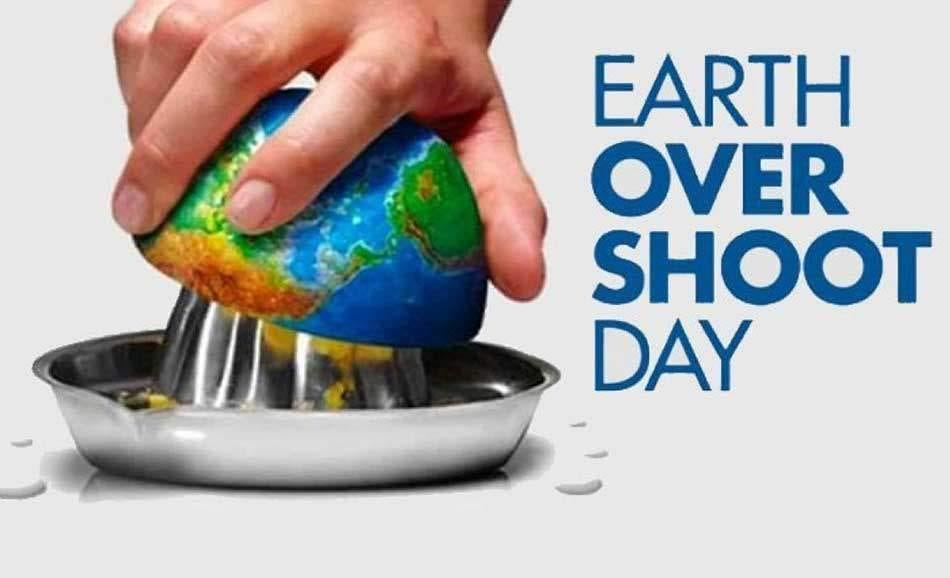





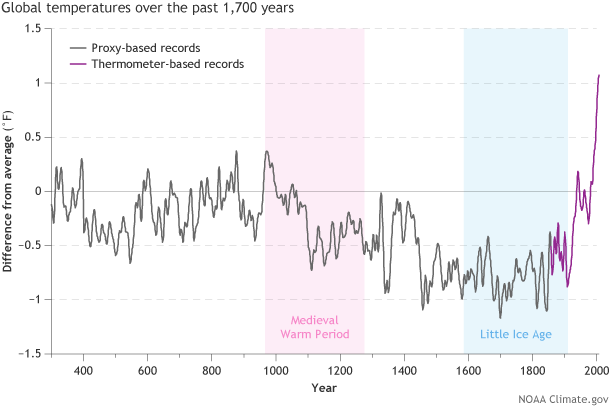
I have had a lot of trouble finding sources that face these issues head-on with all their complexities. Thank you for this wonderful, clear-eyed analysis! Very few people look at the whole situation— economic, political, overconsumption, overpopulation, etc. And I agree with you that this is not meant to be pessimistic. We cannot act with hope and urgency unless we first and continuously face the facts, without fear or flinching. Looking forward to part two!